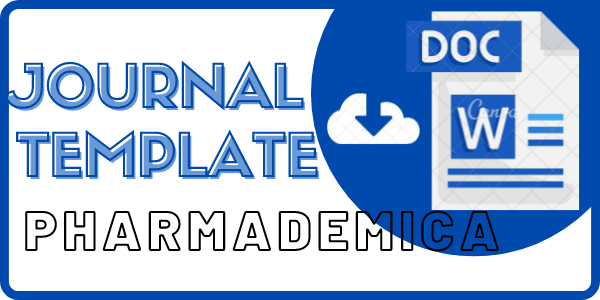The Relationship between Body Mass Index (BMI) and Total Cholesterol Levels in the Community of Malang City
DOI:
https://doi.org/10.54445/pharmademica.v5i1.115
 Abstract View:
Abstract View:
193
 PDF downloads:
PDF downloads:
110
Keywords:
Body Mass Index , Cholesterol, Malang, ObesityAbstract
Obesity is a health problem in many countries, both developed and developing, including Indonesia. The increasing trend indicates that obesity in Indonesia remains a serious public health issue. This study aimed to determine the relationship between BMI and total cholesterol levels in the community of Malang City, which may serve as a basis for policymaking in community-based non-communicable disease prevention programs. The study was conducted using a cross-sectional design on 30 respondents, selected through purposive random sampling. The results of the bivariate analysis showed a p-value < 0.05, indicating a significant relationship between BMI and total cholesterol levels. The correlation coefficient (ρ) was 0.738, suggesting a strong positive correlation between the two variables. This means that the higher a person’s BMI, the higher their total cholesterol levels tend to be in this population. In conclusion, this study demonstrates a significant and strong relationship between BMI and total cholesterol levels in the studied community. These findings support the hypothesis that excess body weight contributes to increased cholesterol levels and may serve as a basis for preventive and promotive interventions in the community.
Downloads
References
Alfitha, R.N., Dahliah, Wiriansya, E.P., Rahmawati, Indarwati, R.P., 2023. Fakumi Medical Journal: Jurnal Mahasiswa Kedokteran Vol.3 No.8 (Agustus, 2023): E-ISSN: 2808-9146
Bray, G. A., Frühbeck, G., Ryan, D. H., & Wilding, J. P. H. 2017. Management Of Obesity. Lancet, 387(10031), 1947–1956.
Després, J.P. 2012. Body Fat Distribution And Risk Of Cardiovascular Disease: An Update.
Circulation, 126(10), 1301–1313.
Ghasemi, A. & Zahediasl, S. 2012. Normality Tests For Statistical Analysis: A Guide For Non-Statisticians. International Journal Of Endocrinology And Metabolism, 10(2), 486–489. PMC3693611
Krauss, R. M., Winston, M., Fletcher, B. J., Et Al. 2020. Obesity And Dyslipidemia. Endocrine Reviews, 41(4), 456–472.
Kusuma, D. I., Prasetya, H., & Nuraini, A. 2020. Hubungan Gaya Hidup Dan IMT Pada Dewasa Muda Di Perkotaan. Jurnal Gizi Dan Kesehatan, 12(2), 75–82.
Kyle,U.G., Schutz, Y., Dupertuis, Y. M., & Pichard, C. 2003. Body Composition Interpretation: Contributions Of The Fat-Free Mass Index And The Body Fat Mass Index. Nutrition, 19(7-8), 597–604.
Indrawati, T., Lestari, I., & Prasetya, H. 2020. Hubungan Antara Indeks Massa Tubuh Dengan Kadar Kolesterol Total Pada Masyarakat Dewasa Di Jawa Tengah. Jurnal Gizi Indonesia, 9(1), 45–50.
Koo, H. C., Tan, L. K., Lim, G. P., Kee, C. C., & Omar, M. A. 2023. Obesity And Its Association With Undiagnosed Diabetes Mellitus, High Blood Pressure And Hypercholesterolemia In The Malaysian Adult Population: A National Cross Sectional Study Using NHMS Data. International Journal Of Environmental Research And Public Health, 20(4), 3058.
National Cholesterol Education Program (NCEP) Adult Treatment Panel III. 2002. Third Report Of The National Cholesterol Education Program (NCEP) Expert Panel On Detection, Evaluation, And Treatment Of High Blood Cholesterol In Adults (Adult Treatment Panel III). NIH Publication No. 02-5215.
PAPDI 2019. Pedoman Pengelolaan Dislipidemia Pada Dewasa Di Indonesia. Edisi Ke-2. Jakarta: Perhimpunan Dokter Spesialis Penyakit Dalam Indonesia.
Rahmawati, D., & Yuniar, R. 2021. Korelasi Indeks Massa Tubuh Dengan Kadar Kolesterol Total Pada Populasi Perkotaan. Jurnal Kesehatan Masyarakat Andalas, 15(2), 102–108.
Kementerian Kesehatan Republik Indonesia. (2018). Laporan Nasional Riskesdas 2018. Jakarta: Badan Penelitian dan Pengembangan Kesehatan.
Rosenheck, R. 2015. Fast Food Consumption And Increased Caloric Intake: A Systematic Review Of A Trajectory Towards Weight Gain And Obesity Risk. Obesity Reviews, 9(6), 535–547. Https://Doi.Org/10.1111/J.1467-789X.2008.00477.X
Samuel, V.T., & Shulman, G.I. 2012. Mechanisms For Insulin Resistance: Common Threads And Missing Links. Cell, 148(5), 852–871.
Shapiro, S.S., & Wilk, M.B. 1965. An Analysis Of Variance Test For Normality (Complete Samples). Biometrika, 52(3/4), 591–611.
Sowers, J. R., Epstein, M., & Frohlich, E. D. (2021). Diabetes, hypertension, and cardiovascular disease: an update. Hypertension, 37(4), 1053–1059.
Spearman, C. 1904. The Proof And Measurement Of Association Between Two Things. American Journal Of Psychology, 15(1), 72–101.
Suha, G.R Dan Rosyada, A. 2022. Faktor-Faktor yang Berhubungan dengan Kejadian Obesitas pada Remaja Umur 13-15 Tahun di Indonesia (Analisis Lanjut Data Riskesdas 2018). Ilmu Gizi Indonesia, Vol 6 No.1 2022
Wells, J. C. 2007. Sexual Dimorphism Of Body Composition. Best Practice & Research Clinical Endocrinology & Metabolism, 21(3), 415–430.
World Health Organization. 2023. Obesity And Overweight. Https://Www.Who.Int/News-Room/Fact-Sheets/Detail/Obesity-And-Overweight
World Health Organization. 2000 Obesity: Preventing And Managing The Global Epidemic. Report Of A WHO Consultation. WHO Technical Report Series No. 894.
Yusuf RN, Ibrahim. 2019. Hubungan Indeks Massa Tubuh (IMT) Dengan Kadar Kolesterol Pada Remaja. Journal Kesehatan Saintika Meditory , 1:50–6.
Downloads
Published
How to Cite
Issue
Section
License
Copyright (c) 2025 Endang Susilowati, Erna Susanti

This work is licensed under a Creative Commons Attribution-ShareAlike 4.0 International License.









.png)








